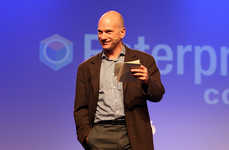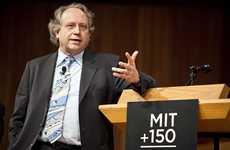From Non-Invasive Surgery to Biological Tissue Printers
Jaime Neely — June 19, 2014 —
The site is always excited to cover the latest developments in technology and this collection of life-changing innovations are some of the most memorable. These innovations -- primarily in health -- not only represent an exquisitely advanced level of engineering, but they've also drastically improved the quality of life for millions of people.
The talk by Peter Weijmarshausen focuses on the rise of 3D printing. He focuses on the power this technology gives to consumers for personalized and customized manufacturing. 3D printing not only turns the business of manufacturing on its head, but it also enables individuals to be exposed to the market in ways that were never possible. Consumers can now introduce brand new products to the market and bypass the initial costs and logistics of production.
The talk by Anthony Atala also focuses on printing, but his technologies tackle reproducing human organs. Using a scanner, a computer detects the damaged tissue and sends that information to a printer. While not available in hospitals yet, some models will be able to repair the damaged tissue directly on the patient while other models are designed to print a three-dimensional, functioning organ that will then be transplanted into a patient’s body.
Ludwick Marishane, inspired by hos own laziness to shower, created a lotion that treats an eye condition called trachoma. His lotion can help the 450 million people in Africa who do not have access to clean water prevent the condition from developing as well as treat it.
These life-changing innovations are truly remarkable and are transforming the quality of life for people all over the world.
The talk by Peter Weijmarshausen focuses on the rise of 3D printing. He focuses on the power this technology gives to consumers for personalized and customized manufacturing. 3D printing not only turns the business of manufacturing on its head, but it also enables individuals to be exposed to the market in ways that were never possible. Consumers can now introduce brand new products to the market and bypass the initial costs and logistics of production.
The talk by Anthony Atala also focuses on printing, but his technologies tackle reproducing human organs. Using a scanner, a computer detects the damaged tissue and sends that information to a printer. While not available in hospitals yet, some models will be able to repair the damaged tissue directly on the patient while other models are designed to print a three-dimensional, functioning organ that will then be transplanted into a patient’s body.
Ludwick Marishane, inspired by hos own laziness to shower, created a lotion that treats an eye condition called trachoma. His lotion can help the 450 million people in Africa who do not have access to clean water prevent the condition from developing as well as treat it.
These life-changing innovations are truly remarkable and are transforming the quality of life for people all over the world.
4
Score
Popularity
Activity
Freshness


 play_circle_filled
play_circle_filled play_circle_filled
play_circle_filled play_circle_filled
play_circle_filled play_circle_filled
play_circle_filled play_circle_filled
play_circle_filled play_circle_filled
play_circle_filled play_circle_filled
play_circle_filled play_circle_filled
play_circle_filled play_circle_filled
play_circle_filled play_circle_filled
play_circle_filled